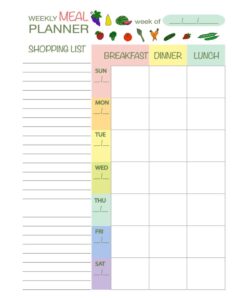Blog
One Dinner for the Whole Family
One Dinner for the Whole Family

Are you cooking two or maybe three different dinners each evening? Do you wonder when you will ever be able to cook just one meal which the whole family will eat?
Having fussy eaters, picky toddlers or children who all have different food preferences can make it challenging to cook and enjoy one meal together. It can be easier and more peaceful to feed children their preferred foods at a different time of the day than to battle a sit-down family meal with new foods.
Factors such as sporting commitments, shift-work, longer working hours, technology and an increase in the consumption of fast food are all impacting the frequency that families sit down and eat a meal together.
Research shows that eating as a family has a number of positive benefits including improved family relationships, an increase in healthy eating habits and better mental health outcomes.
So where do you start? Here are tips to help you get underway. It might not happen overnight but is worth it in the long run.
1. Give it a go!
Start with just one night a week, if every night seems too difficult or overwhelming.
Choose a meal that the whole family likes, if there is one!

Set yourself, and your children, up for success. You know your children and their food preferences best, so choosing a meal that you know is going to be super challenging for them is not likely to end well.
Deconstructed meals where foods are served separately are usually more successful than one mixed texture meal. This doesn’t mean that you never serve a meal such as pasta bake or risotto but that you don’t start with these more challenging meals.
Serve meat or sauces separate to pasta or rice. Try family style serving, described below, putting all of the meal components separately into the centre of the table.
2. Meal planning
Planning meals for the week and having them visible for the whole family to see can help children be prepared for what meals are to come.

Involve the family in meal planning, asking them for suggestions of meals they would like included in the week’s plan. Always have at least one food as part of the meal that is a safe food for your child. If you are having chicken stir fry serve the noodles or rice separately from the stir fry and cut up a few raw carrots sticks as a side dish if these are a veggie they eat.
Encourage children to help with meal preparation, setting the table and packing away.
3. Family style serving
Family style serving refers to putting all of the foods into the centre of the table, giving everyone an empty plate and allowing everyone to serve themselves.
This gives children a feeling of control regarding their food choices.
Avoid commenting on their food choices, pushing them to try new foods or making comments about the foods they do not choose such as “The chicken is delicious, you should try the chicken.” “Jack is eating the chicken, I wish you would eat the chicken.”

4. Serve new with old
Ensure that there is always at least one component of the meal that your children do eat. If you know they are unlikely to eat the chicken, but they love pasta and will eat raw carrot sticks or corn on the cob, plan the meal to be chicken, pasta, carrots and corn.
Be realistic – there will be meals where your child might only eat one component of the meal and that is fine. They may choose not to eat at all and that is also fine.
Ellyn Satter’s Division of Responsibility, states that the parent’s role is to decide what is for the meal, as well as when and where the meal will take place. The child’s job is to decide what they eat and how much.
5. Dinner for lunch
With younger children it might be better to have a family meal at lunch time or even at breakfast. Dinner is often the most difficult meal of the day as children are tired and their sensory systems having no reserves to cope with new or different foods.
There is no rule that says you can’t have a cooked meal at lunch time and then serve foods that are easier for your child to manage at dinner time. On nights where your child is routinely very tired, such as after daycare, plan an easy to chew, safe meal.
The more encouraged, pushed or forced to eat a child feels, the more resistant they will be.
Focus on happy, positive mealtimes that are fun and enjoyable. A child is more likely to try a new food in this environment.